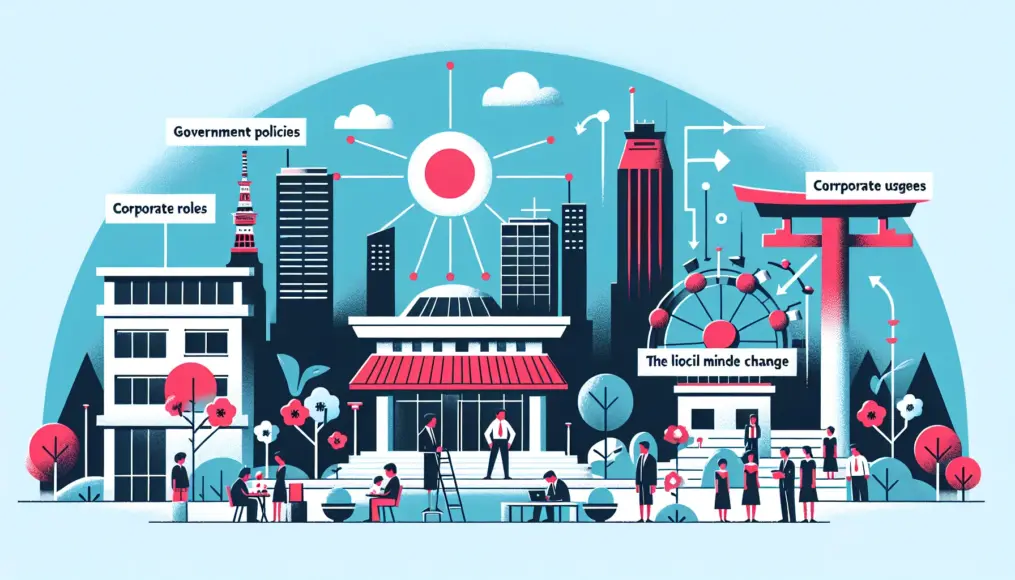You’ve probably heard the term “trade friction” thrown around in discussions about the economy, but what does it really mean? At its core, trade friction refers to the tensions and conflicts that arise between countries in the realm of trade. This issue extends beyond mere economic concerns; it significantly influences international relations and politics, making it a crucial topic to explore.
In this article, we’ll break down the fundamentals of trade friction, delve into historical examples, and examine its implications in today’s world. By doing so, we can gain a clearer understanding of how this issue directly affects our lives.
- A basic definition of trade friction and its main causes
- Historical examples that illustrate the evolution of trade friction
- The impact of trade friction on modern economics and politics
Understanding Trade Frictions
Trade frictions refer to the conflicts and tensions that arise in trade activities between countries. This issue impacts not only economic factors but also political and social dynamics, making it crucial for us to comprehend. In our increasingly globalized world, trade frictions have become an ever more significant topic of discussion.
In this section, we’ll delve into the definition of trade frictions and their main causes. By doing so, you’ll gain insight into how these frictions form and the effects they can have.
What Are Trade Frictions?
Trade frictions primarily refer to conflicts and grievances that occur in international trade. They often arise due to tariffs, import restrictions, and differing regulations. Such tensions can deteriorate economic relations between countries and, in some cases, escalate into trade wars. Trade frictions illustrate the dual nature of international economic ties: while countries become more interconnected, the risks of friction also increase.
Historically, there have been numerous examples of trade frictions between nations, with far-reaching consequences. In particular, tensions between major economies can significantly impact the global economy.
- Trade frictions refer to conflicts and tensions in international trade.
- Tariffs and import restrictions are major causes.
- Frictions between major economies can affect the global economy.
Key Factors Contributing to Trade Frictions
Several factors contribute to the emergence of trade frictions, but three main ones stand out. First is the imbalance of economic interests. When a country becomes overly dependent on imports from another, its domestic industries may suffer. As a response, governments may adopt protectionist policies, leading to tensions.
Next, cultural and regulatory differences play a role. Regulations concerning products and services vary from country to country, which can lead to friction. This is particularly evident in sectors like food and pharmaceuticals, where stringent regulations often create challenges in international trade.
Finally, geopolitical factors also exert influence. When international relations are tense, trade frictions are more likely to occur. Specifically, military conflicts or political issues can negatively impact economic connections.
- Economic imbalances can trigger frictions.
- Cultural and regulatory differences are common causes.
- Geopolitical factors influence trade frictions.
Historical Examples of Trade Friction
Trade friction is a longstanding issue in international relations, with numerous historical instances to consider. Notably, the trade disputes between the U.S. and Japan, as well as those with the EU, have significantly impacted not just the economies but also the political landscapes of the countries involved. By examining these cases, we can explore how trade friction has formed and what consequences it has led to.
In this section, we will delve into specific historical examples of trade friction, looking closely at their backgrounds and outcomes. This will deepen our understanding of trade friction and provide insights relevant to contemporary international relations.
U.S.-Japan Trade Friction
The U.S.-Japan trade friction is a significant case that emerged between the 1980s and 1990s. It began when Japan started running a trade surplus with the United States. The U.S. perceived Japan’s market as closed and responded with a variety of measures. This led to increased tariffs and import restrictions, adversely affecting Japanese companies as well.
The friction not only had serious repercussions for the economic relationship between the two countries but also heightened political tensions. As a result, both nations entered into trade agreements to mitigate the friction. This case illustrates how trade disputes can alter the dynamics between countries.
- The U.S.-Japan trade friction occurred from the 1980s to the 1990s.
- Japan’s trade surplus sparked discontent in the U.S.
- Both countries established trade agreements to alleviate the friction.
Friction with the EU
Trade friction with the EU is particularly evident in the agricultural and automotive sectors. The EU has implemented agricultural protection policies and established strict regulations on imports from outside its borders. As a result, countries like the U.S. and Japan often express dissatisfaction with these regulations, leading to friction.
Such friction reflects the influence of protectionism in international trade, showcasing how nations strive to protect their own interests. Consequently, trade negotiations can become challenging, sometimes resulting in retaliatory measures. The friction with the EU serves as an example of the complexities within the international trade system.
- The EU has adopted agricultural protection policies.
- It imposes strict regulations on imports from outside.
- Trade negotiations can be difficult, sometimes leading to retaliatory measures.
The Impact of Modern Trade Friction
Modern trade friction is having a significant impact on the global economy. As protectionist policies increase, countries are becoming more focused on prioritizing their own interests. In this environment, the effects of trade friction on both the economy and politics cannot be overlooked. While there is a growing need for international cooperation, ongoing friction is also giving rise to new challenges.
In this section, we will delve into how contemporary trade friction is affecting economic and political landscapes, providing a deeper understanding of this complex issue.
Economic Impacts
Modern trade friction influences the economy in various ways. For starters, increased tariffs and import restrictions can lead to higher prices for consumers. This, in turn, reduces consumer purchasing power and raises the risk of economic stagnation. Additionally, companies may face rising production costs as the import of raw materials and components becomes more challenging, potentially squeezing their profits.
Moreover, trade friction also affects international investments. Investors typically shy away from uncertainty, so prolonged trade disputes could result in decreased investment and slower economic growth. Thus, it is crucial to recognize that trade friction has far-reaching repercussions for the economy as a whole.
- Increased tariffs raise product prices
- Reduced consumer purchasing power heightens the risk of economic stagnation
- Decreased investment may slow economic growth
Political Impacts
Trade friction significantly affects the political landscape as well. Increased tensions in international relations can make diplomatic dialogue more difficult, which may undermine trust between countries and create a vicious cycle of escalating friction.
Additionally, trade friction can influence domestic politics. In response to public dissatisfaction stemming from trade disputes, governments may bolster protectionist policies. However, such measures can harm the economy in the long run, necessitating cautious approaches.
Furthermore, the impact of trade friction on elections is also noteworthy. Politicians sometimes leverage trade issues to garner support, which can complicate international relations even further.
For those looking to gain a deeper understanding of modern trade friction, we recommend this article: “What is Trade Liberalization? The Untold History and Its Impact.” It offers an in-depth look at how trade liberalization has evolved, its historical context, and its implications. Adding the perspective of trade liberalization can greatly enrich the discussion around the effects of trade friction.
- Increased tensions in international relations complicate diplomatic dialogue
- Domestic politics may strengthen protectionist policies
- The influence of trade issues on elections is significant
The Future and Outlook of Trade Friction
Trade friction will continue to be a significant issue in the global economy moving forward. As globalization advances, countries have become increasingly interdependent; however, there is also a growing trend toward protectionism. This dynamic calls for new solutions and challenges regarding trade friction. In this section, we will explore the future of trade friction and consider the potential directions it may take.
We will also discuss the impact of trade friction on the global economy and examine possible scenarios that could arise as a result. Understanding these developments will help us grasp the challenges that lie ahead.
Solutions and Challenges
International cooperation is essential for resolving trade friction. It’s crucial for nations to engage in dialogue that fosters mutual understanding and identifies common interests. Particularly, the reduction of tariffs and adjustment of regulations through international trade agreements can serve as a first step toward resolution. Additionally, it’s important to examine the underlying causes of trade friction.
Nonetheless, finding solutions is fraught with challenges. Reaching consensus can be difficult when national interests clash. Moreover, domestic political situations may complicate international cooperation. Therefore, it is vital to maintain a flexible approach and seek sustainable solutions.
- International cooperation is essential for resolution
- Reducing tariffs and adjusting regulations through trade agreements
- While reaching consensus is challenging, maintaining flexibility is key
Impact on the Global Economy
Trade friction has a variety of effects on the global economy. First, ongoing trade disputes may lead to a decline in international investment. Investors tend to avoid risk, seeking stability, which means prolonged friction could cause investments to retract.
Additionally, sustained trade friction can affect supply chains. Companies may need to reassess their sources for raw materials and products, which can impact costs and production efficiency. Furthermore, trade friction can trigger fluctuations in international markets, potentially destabilizing economies.
When considering the future of trade friction, it’s clear that developments in international economics and politics are deeply interconnected. For those interested in this topic, we also recommend the article “The Impact of Fiscal Deficits: Exploring the Complex Relationship Between Economics and Politics.” This piece delves into how fiscal deficits influence both the economy and politics, and discusses their relevance to trade friction.
- Trade friction may decrease international investment
- It can lead to impacts on supply chains
- It can trigger market fluctuations and contribute to economic instability
Conclusion
Trade friction refers to the conflicts and tensions that arise in trade activities between countries, and its effects ripple through both economic and political spheres. Understanding how trade friction has developed and the consequences it has produced throughout history is crucial. Even today, trade friction persists, contributing to economic stagnation and increasing tensions in international relations.
Looking ahead, international cooperation is essential, and we must seek sustainable solutions to these issues. Resolving trade friction is no easy task, but maintaining open dialogue and a flexible attitude is vital. How we choose to confront these challenges will significantly impact the future of the global economy.
- Trade friction has serious implications for the global economy.
- Historical examples deepen our understanding of trade friction.
- International cooperation is the first step toward resolution.
Let’s deepen our understanding of trade friction and keep an eye on future developments. We’d love to hear your thoughts and opinions in the comments!



Comment